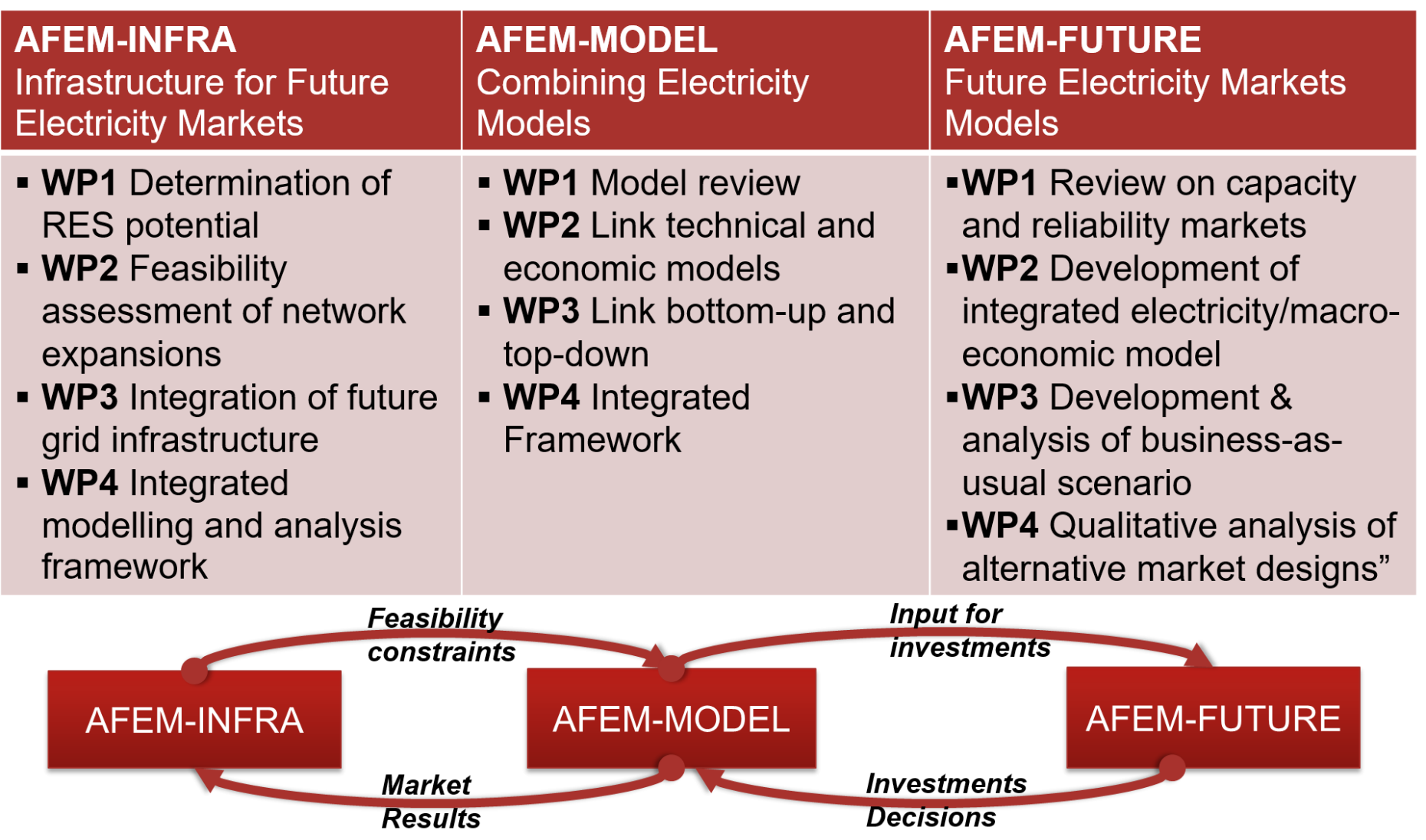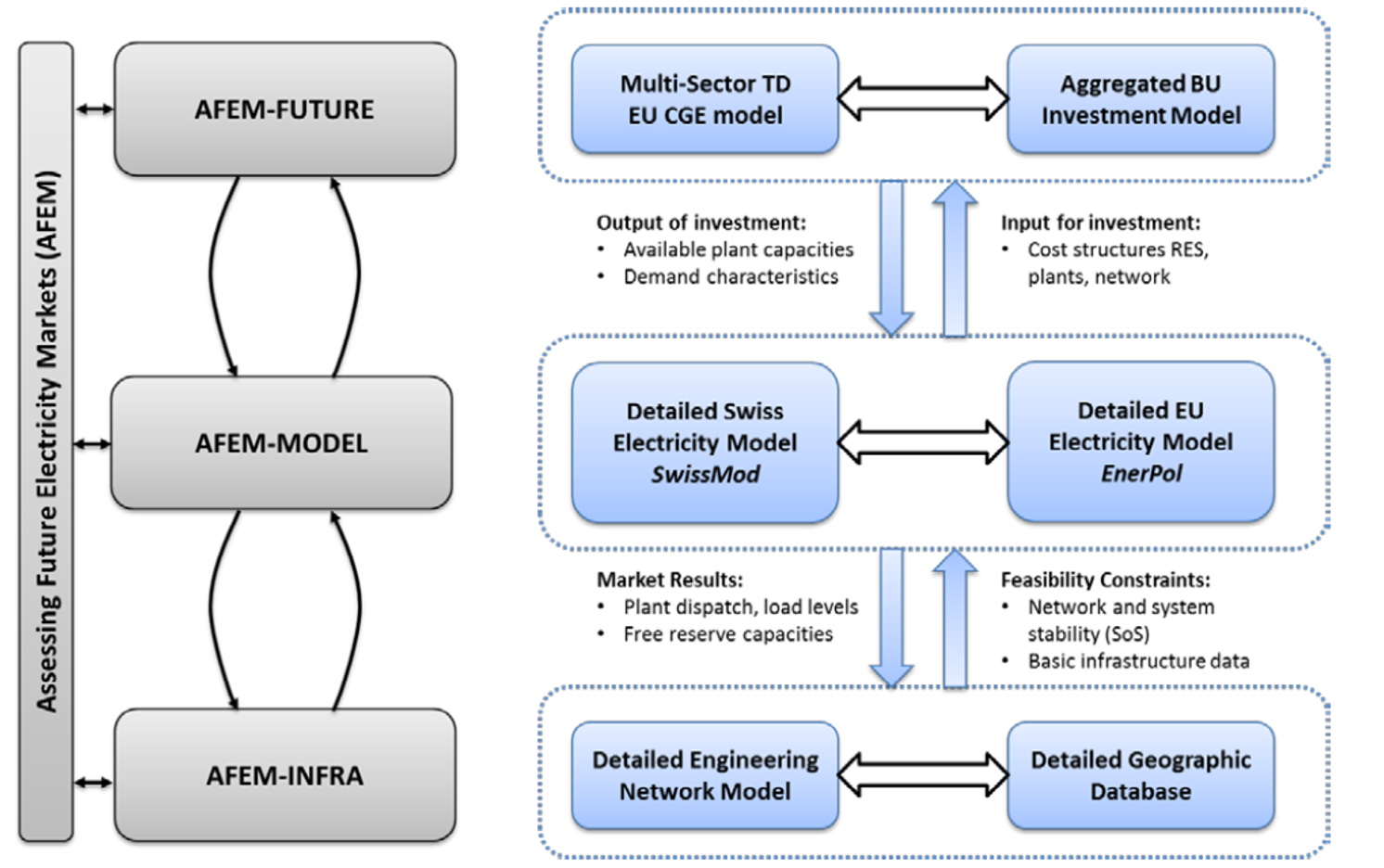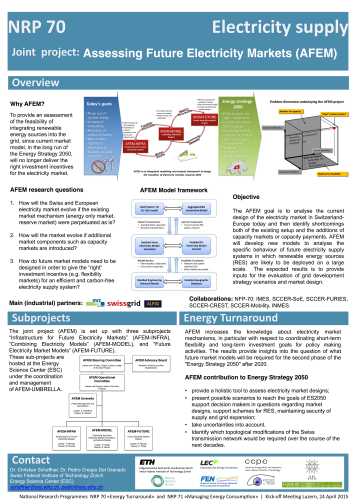Achievements
Expected contribution to Energy Strategy 2050
AFEM increased the knowledge about electricity market mechanisms, in particular with respect to coordinating short-term flexibility and long-term investment goals for policy making activities. AFEM provided insights into the question of what future market models will be required for the second phase of the "Energy Strategy (ES) 2050" after 2020. AFEM implementation and research activities include:
- Analyse alternative electricity market designs, for example: is there a feasible transition path from today's market model to the proposed future market model?
- Formulation of possible scenarios to reach the goals of ES2050
- Support decision makers in questions regarding support schemes for RES maintaining security of supply and grid expansion. For example: how effective is a proposed market model in providing the necessary investment incentives to maintain a defined level of security of supply?
- Identify which topological modifications of the Swiss transmission network would be required over the course of the next decades.
- Consider the energy transition of neighbouring countries and their generation mixes.
- Determine the amount of exploitable RES and their role in shaping the market model. How well-suited is the proposed market model to provide an incentive-based regulation, in particular with respect to the promotion of RES and the reduction of CO2-emissions?
Work package structure
The three AFEM sub-projects integrated key layers and techno-economic decisions of the electricity system. AFEM-INFRA provided a detailed network model and geographic information on the potential location of renewable resources. AFEM-MODEL concentrated on developing an integrated framework around a dispatch model while AFEM-FUTURE analysed the macroeconomic features surrounding the electricity markets to provide a qualitative insights on market designs.



